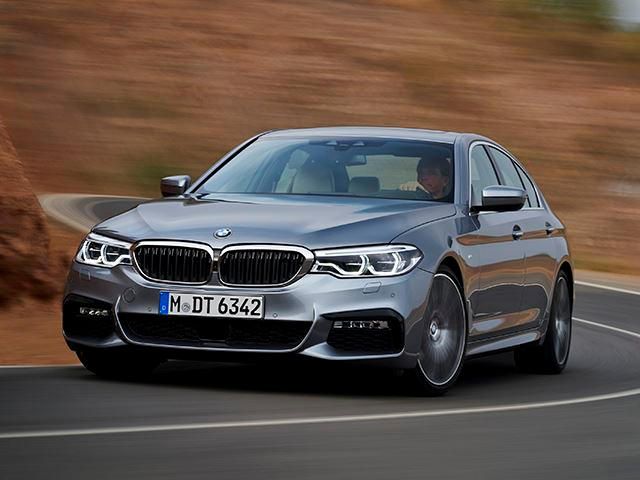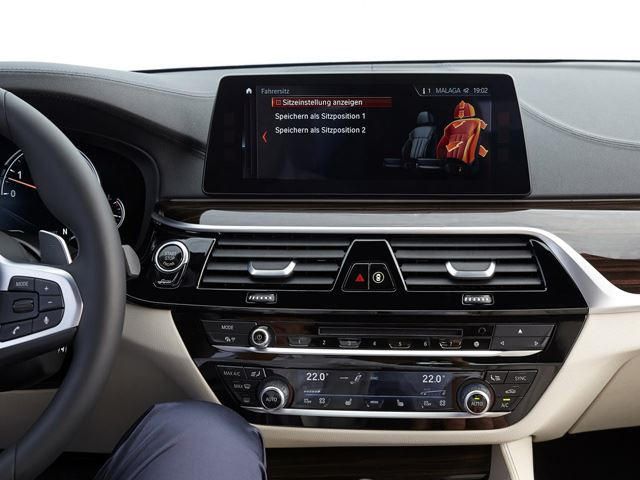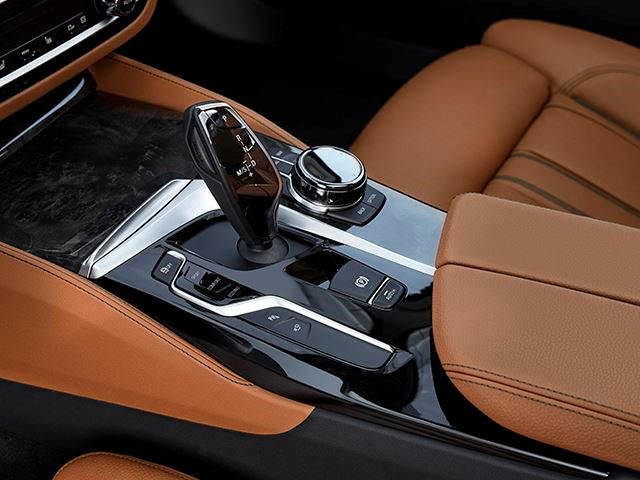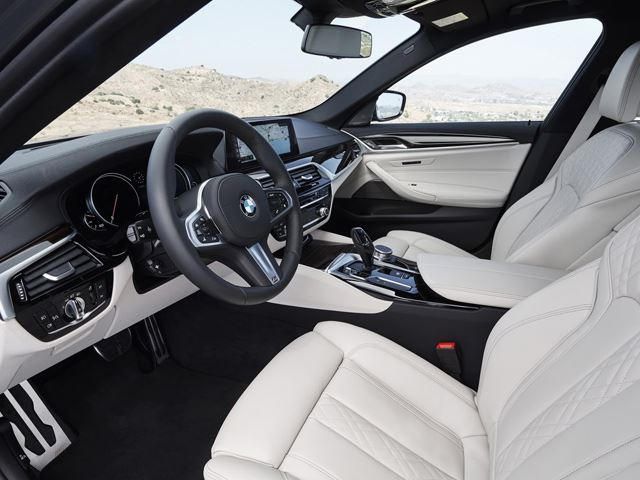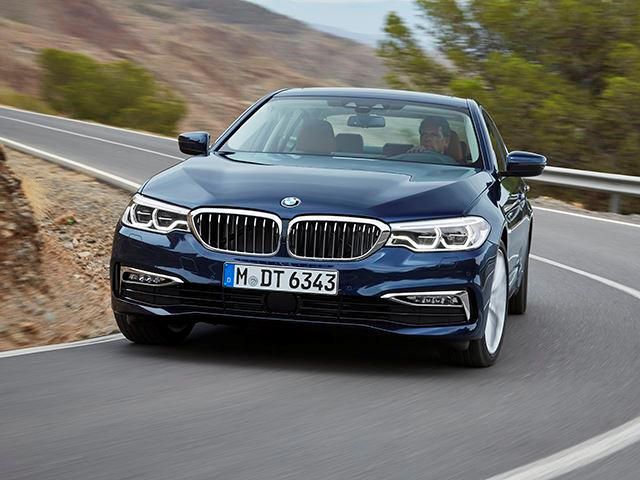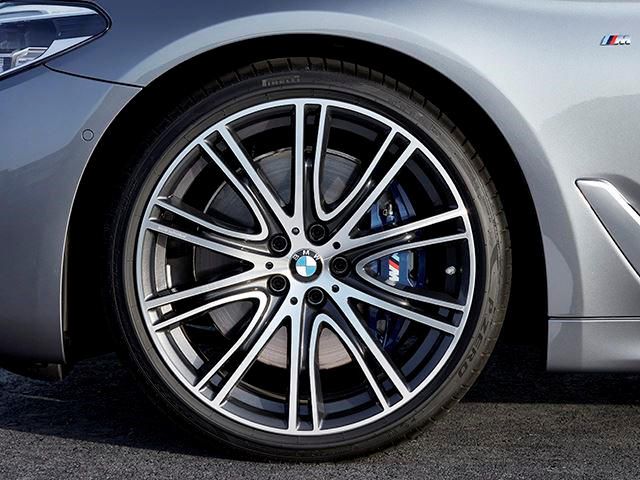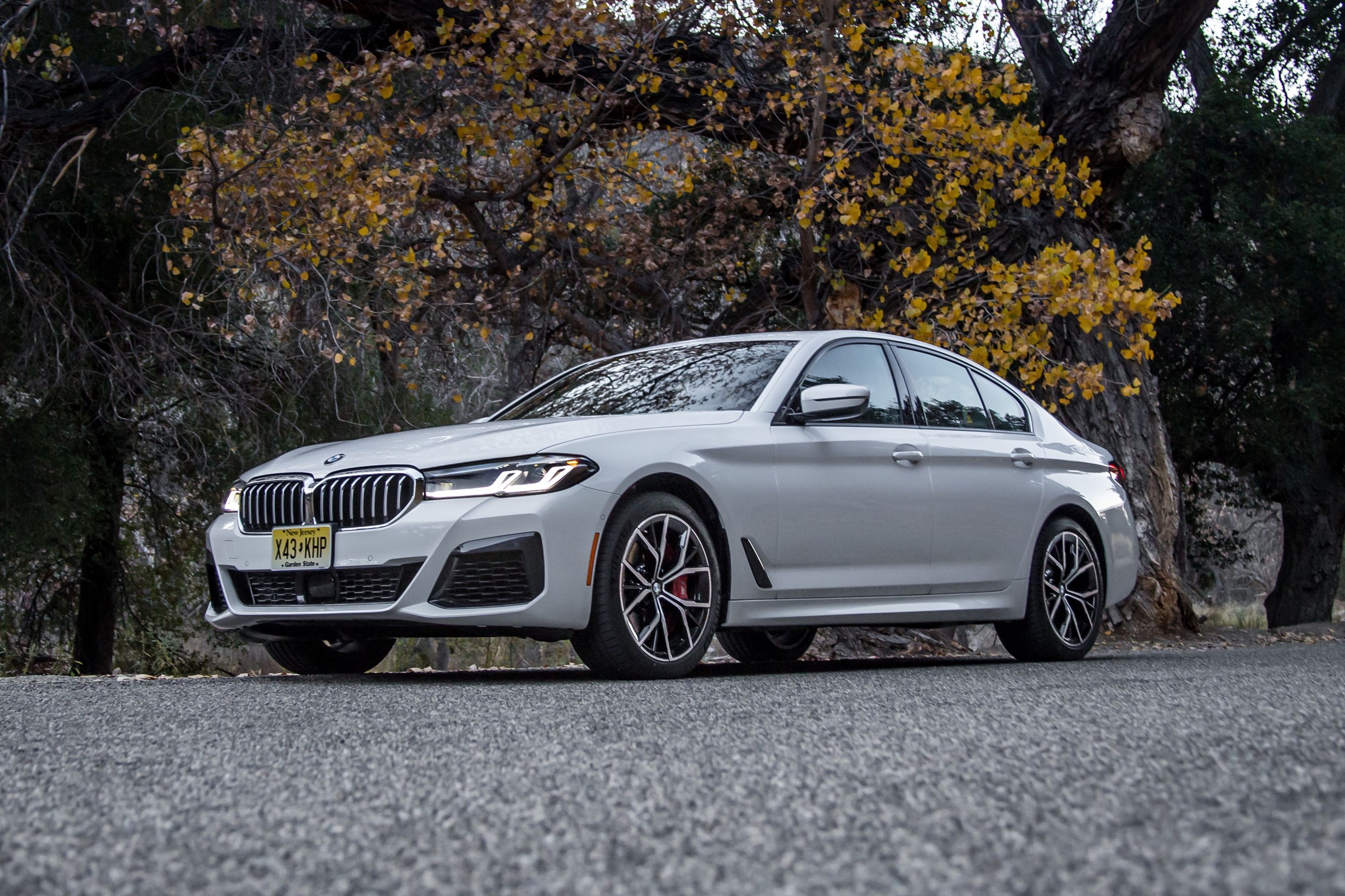
In no way is 44,000 sales per year a bad number, especially for a middle of the pack luxury car. That's why when it came time for BMW to begin redesigning the 5 Series, it decided that a radical change wasn't the way to go. If it aint broke, don't fix it, right? But just because something isn't broken doesn't mean that it can't be improved, and with the 5 Series' edgier-looking rivals (the Mercedes E-Class and Lexus ES) soaking up segment sales, BMW thought it would bring more pizzazz to its midrange luxury sedan.
BMW also managed to make the new 5 Series, named the G30, larger than its predecessor. It's longer by 1.2", taller by 0.6", and wider by 0.3", although its proportions look sleeker and less bloated than the outgoing model. Lending to that illusion is a cabin that's set back a bit, giving the G30 a lower coupe roofline that does wonders for its aesthetics. A seemingly shorter greenhouse enabled by higher shoulders and the curtailed roofline makes the 5 Series look more planted as if it has a lower center of gravity. To give the G30 more of a standout face among its more radical looking peers, BMW enlarged the kidney grilles and connected them to the headlights with no metal to bridge the gap, bestowing the Bimmer with more of an in-your-face persona.
The rear appears to taper off more severely, combining with the longer and slimmer taillights to make the G30's trunk look thinner. Pronounced lines running alongside the body borrow the 7 Series' more sophisticated look, elevating the visual playing field for the BMW, which has to keep up with the E-Class Mercedes that does a fairly good impression of the S-Class. Despite the visual enlargement, this 5 Series breaks the industry trend of having new models weigh more than previous versions. In this case, the 5 Series sheds 137 pounds of weight compared to its predecessor through the use of BMW's CLAR, or Clustered Architecture approach.
This is BMW's way of saying it layered a variety of materials, which include high-strength steel, aluminum, and magnesium, together for optimal weight and structural rigidity. This is done in part to keep good driving dynamics within the BMW DNA - something the previous 5 Series slacked on - but it's also to help keep the new lineup of TwinPower Turbo engines untaxed. At launch, we'll see the 530i and 540i come with a turbocharged 2.0-liter four-pot and a turbocharged 3.0-liter inline-six respectively. With the four-cylinder pushing 248 horsepower and 258 lb-ft of torque through the eight-speed transmission to the rear wheels, the 530i should hit 60 mph from a dead stop in 6 seconds.
The 540i will make the same run in 4.9 seconds thanks to 335 horsepower and 332 lb-ft of torque, and both engines will knock 0.2 seconds off their sprints to 60 mph when spec'd out with BMW's xDrive AWD system. Each of these 5 Series spawns will make a top speed run of up to 130 mph, but a 155 mph option can be unlocked with the M Sport package. With that box ticked, the 5 Series gets 19" wheels, a revised front bumper with a larger intake, a lowered suspension, new side skirts, a rear diffuser, rectangular sport exhaust tips, performance tires, an M Sport interior leather accents, and an M Sport steering wheel. Technology also takes a center stage in the new 5 Series, with massaging seats alluding to the extensive efforts made for comfort.
Silicon cakes many of the car's functions, from the gesture-sensing infotainment system to the GPS-aided transmission borrowed from Rolls-Royce that changes gears according to road topography for optimized fuel economy. Attendance is good in the autonomy department as well, with adaptive cruise control, stop and go traffic help, a lane departure warning feature that can steer the car back into its lane if driver attention lapses, an evasive steering safety layer that can guide the car out of harms way and even counter steer to correct itself, and automatic parking systems. Helping good drivers be better and bad drivers become acceptable is a 3D surround view system that helps parking and can double as a security monitoring system.
There is also a navigation system that learns preferred routes and a parking information service that should minimize the need to circle city blocks to look for parking. Together, these changes should help the 5 Series hit Mercedes where it hurts: in the styling, technology, and performance departments. BMW hasn't released pricing information yet, but don't expect the 5 Series to deviate much from the E-Class. February of 2017 should see the 530i and 540i hit dealerships in RWD or xDrive AWD variants with a 550i coming in spring. Along with those we can likely expect a plug-in hybrid, a fully electric 530e, hit the market. Soon after, our favorite 5 Series, the M5, should be coming with AWD glory.

